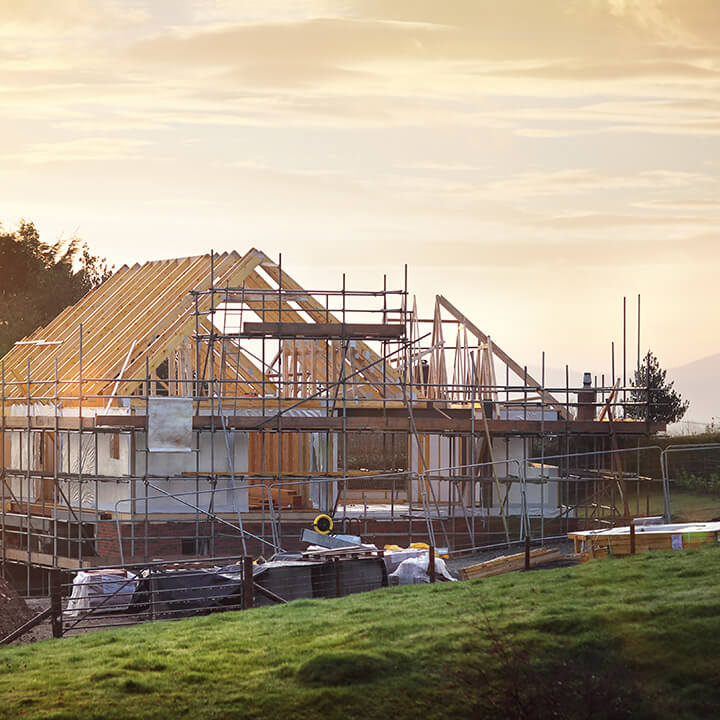Protestor action: What landowners/ developers need to know
19th December 2022
Protestor action: Social and commercial context
The last few months of 2022 have been some of the most turbulent in recent years. Political turmoil and economic uncertainty, impacting an already strained society post Covid, are contributing to unrest on a scale that has not been seen in the UK for some time.
As a corollary to that, recent months have seen a rise in protestor action. Climate change, environmental protection, cost of living and humanitarian concerns, as well as workers’ rights and pay are all issues which have prompted protests in various forms. Whether it be protestors blockading transport links, development sites, or museums; or whether it be campaign groups disrupting trading, harassing staff or setting up encampments, protestor action can cause financial loss, distress and reputational damage for businesses.
So far as landowners and developers are concerned, protestor action can also interfere with lawful use of and access to land, and it can cause significant costs and delays to the progress of projects and developments.
In terms of even wider impact, traffic chaos, supply chain disruption and even, on occasion, civil unrest, can result in inconvenience or harm for the general public or other lawful occupiers.

Dealing quickly and effectively with protestor action
Dealing quickly and effectively with protestor action can therefore be of vital importance, but it is not always easy. Resourcing issues, or uncertainty as to whether protestors’ behaviour actually amounts to criminal activity, can prevent the police from being able to help. Private landowners, developers and other businesses often need to obtain a court order before they are able to forcibly remove protestors, but that can be difficult where the identity of any protestors is unknown or constantly changing, so that they can’t be named in legal proceedings.
In addition, granting injunctions against unidentified persons is inherently controversial. An injunction is a remedy which has serious ‘teeth’. It is an order, issued by the court, for persons to do or not to do something. It contains a penal notice, which means that if an affected person breaches the injunction, they are in contempt of court and can be imprisoned [1]. The severity of the potential consequences of an injunction means that it is vitally important that the order should only capture those persons/potential defendants, and those particular circumstances, that it really needs to. Otherwise there is a risk that innocent persons could get caught in the cross fire.
Recent case law will be of significant interest to landowners and developers who find themselves troubled by protestor action, or trespassers generally, because it clarifies the correct approach for obtaining an injunction requiring unidentified individuals to vacate and stay away from a site. This is an area of law which has been in flux in recent years.
Protestor action and persons unknown injunctions: What landowners/developers need to know
As mentioned above, developers and other landowners/occupiers cannot lawfully remove protestors unless they have obtained a court order allowing them to do so. But how can an order be obtained against persons whose identity unknown or constantly changing? And how can businesses deal with protestors who simply return to the site or relocate to another of the business’ premises?
The answer is to obtain an injunction, with sufficient geographical and temporal limits to prevent further disruption, against ‘persons unknown’. However, the courts don’t grant such injunctions without first undertaking a thorough assessment as to whether they are an appropriate remedy.
The 2020 Canada Goose v Persons Unknown litigation [2] authoritatively set out key guidelines for claimants wishing to obtain injunctions against persons unknown, particularly against unlawful protestors. The 2022 Court of Appeal decision in Barking and Dagenham [3], however, overturned a key aspect of the Canada Goose case. In doing so, it has updated the law in favour of landowners/lawful occupiers.
As well as clarifying the legal guidelines for obtaining injunctions against persons unknown, Barking and Dagenham may signal the beginnings of a move away from the arguably ‘pro-protestor’ approach which has been adopted by the courts in recent years.
Protestor action and persons unknown injunctions: Legal and practical advice
One key principle arising out of Canada Goose has now been overturned. That is, the now-defunct idea that final injunctions against persons unknown are not generally available, such that interim injunctions against unknown individuals will usually be discharged at trial, leaving in place an injunction only against persons who have, by the time of the trial, been identified [4] and been served with the order.
Helpfully, Barking and Dagenham clarifies that interim injunctions obtained against persons unknown/unidentified persons can now be continued at trial on a final basis. Crucially, final injunctions can therefore even cover newcomers who may not have been subject to the injunction at the time the order was made, but who subsequently commit an act in breach of the injunction.
This decision enables the enforcement of injunctions against individuals acting in breach, at the time or in the future, where those persons are not a party to proceedings, so long as they fall within the class of people caught by the injunction.
The Barking and Dagenham case should therefore significantly extend the protection against trespass and other unlawful conduct (including harassment of staff and others) afforded by a persons unknown injunction to provide long-term relief to landowners, developers and other lawful occupiers [5].
All of the following aspects of the Canada Goose authority remain good law and in effect, however, and must be taken into account by any landowner/developer wishing to pursue a persons unknown injunction to tackle protestor action:
- Persons unknown defendants must be people who have not been identified but are capable of being identified and served with proceedings, if necessary by alternative service such as can reasonably be expected to bring the proceedings to their attention (such as, say, handing the order to them, or affixing copies around the perimeter of the site). Such persons include both anonymous defendants who are identifiable in some way at the time the proceedings commence, and also newcomers (people who in future fall within the specific description of the persons unknown).
- The persons unknown must be defined in the originating injunction application by reference to their conduct which is alleged to be unlawful.
- Interim injunctive relief may only be justified and granted if there is a sufficiently real and imminent risk of a tort being committed. (This is intended to avoid the risk of an injunction preventing lawful protest.)
- As in the case of the originating process itself, the defendants subject to the interim injunction must, in the continuation application, be individually named if known and identified or, if not, must be capable of being identified and served.
- The prohibited acts must correspond to the threatened tort. They may include lawful conduct if, and only to the extent that, there is no other proportionate means of protecting the claimant’s rights.
- The terms of the injunction must be sufficiently clear, precise and non-technical, to enable persons potentially affected to know what they must not do.
- The injunction should have clear geographical and temporal limits. This includes time limits on final injunctions where appropriate, so that the injunction must come back before the court for further consideration if it is to be extended beyond that time limit.
In terms of practical advice, when seeking a persons unknown injunction, applicants/claimants should focus on the specific protestor action or risks against which they are trying to guard. It is crucial not to try to obtain any wider injunction than is strictly necessary to prevent unlawful conduct. Applications and notices should use clear, plain English and, where possible, should not include legal jargon or technical terminology.
Expert legal assistance will also be required, not only when it comes to the preparation and conduct of court proceedings, but also when it comes to ensuring that the order requested affords appropriate and (so far as possible) future-proofed protection for the business.
How Walker Morris can help landowners/developers to respond effectively to protestor action
The need to apply for a persons unknown injunction usually arises in highly pressured situations, and often requires complex court proceedings to be pursued with real urgency. In the context of protestor action in particular, the behaviour of, and action taken by, landowners/developers can also be the focus of media spotlight and public opinion, which can further raise the stakes. Remaining calm, and retaining experienced, specialist legal counsel, can help to keep stress levels, and mistakes, to a minimum.
Walker Morris’ Commercial Dispute Resolution team has extensive expertise when it comes to obtaining effective injunctions against trespassers whose identity is unknown. Our experienced and approachable solicitors will be happy to help any landowner/developer or other lawful occupier faced with trespassers or the threat of traveller/protestor action to successfully navigate the process.
For further information or advice, please contact Nick, Louise Norbury Robinson, or Kathryn Vickers.
[1] In the case of local authority landowners, the Anti-Social Behaviour Police and Crime Act 2014 also affords the court the ability to attach a direct power of arrest to the injunction, meaning that applying to the Court for a contempt of court order can be avoided before an offender is taken into custody.
[2] [2020] EWCA Civ 303 and [2019] EWHC 2459 (QB)
[3] London Borough of Barking and Dagenham v Persons Unknown [2022] EWCA Civ 13
[4] not necessarily by name, but perhaps by CCTV or bodycam footage
[5] It should be noted that, at the time of writing, some aspects of the Barking and Dagenham case are due to be appealed again, this time to the Supreme Court. Walker Morris will monitor and report on developments.








